Hand-Built 'Warbird' WWII Jeep Hot Rod Is an Absurdly Detailed Work of Art
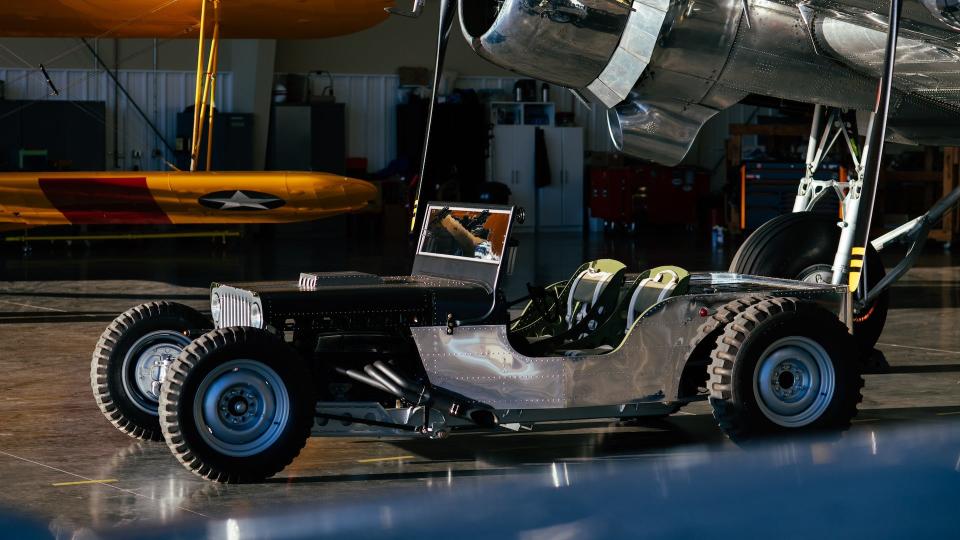
Here's something you won't see at your nearest Army unit's motor pool: the Warbird Jeep. The custom machine was built by Cameron Aamodt, an aviation mechanic and accomplished gearhead. Aamodt combined his love of military aircraft and automotive artistry to make a hot rod that takes after the Jeep Wrangler's veteran grandfather, the Willys MB, as well as many of the iconic American planes that fought in World War II—otherwise known as warbirds.
It would be unfair to say that Cameron cobbled the Warbird Jeep together from scrap, but he says he built it by hand from the ground up. In fact, the only part borrowed from an O.G. Jeep is the iconic grille. For the rest, he took an old Jeep body and put it on a rotisserie in order to pull all the measurements and angles that he would be working with when fabricating the custom aluminum body he would use for the Warbird. He also built the Jeep's frame out of thick rectangular wall tubing and prepped it for installation of its major components.
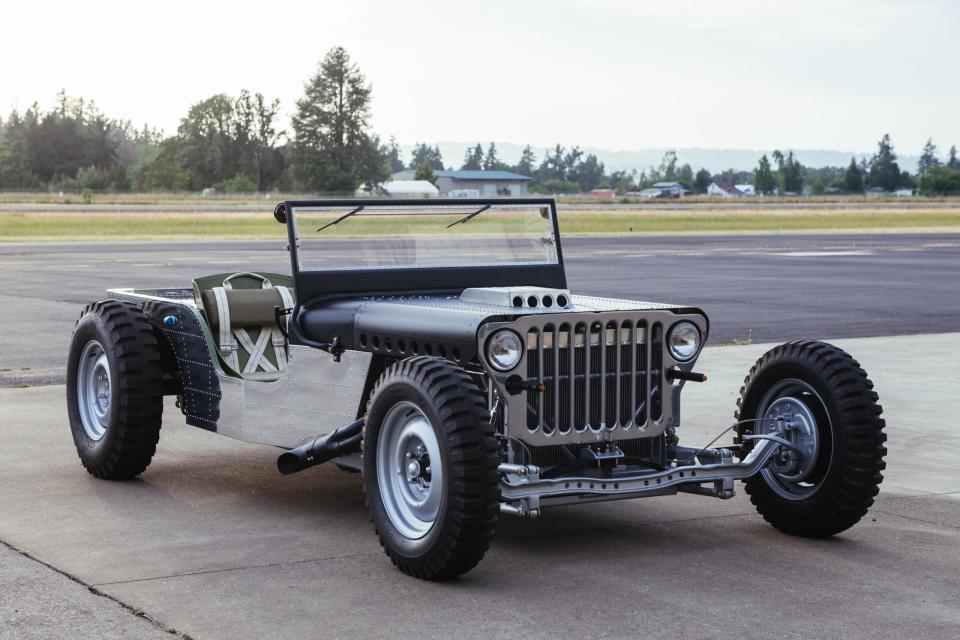

He then modified a 1960 Ford F-100 front axle with radius bars and a transverse leaf setup, then put it on the front end of the Warbird. The Jeep's rear end has a 12-bolt axle taken off a Chevy, and Cameron installed a four-link and coilover suspension. He says he chose this front and rear setup specifically to run larger Jeep tires that could handle high speeds.
Of course, the Warbird would need something gnarly to drive its beefy tires, and Cameron went with a 350 V8 paired with an automatic transmission. He had initially considered putting an aircraft power plant into the Warbird, but decided against it given the extensive maintenance and care it would require. An aero engine would need a mechanic with aviation power plant expertise on retainer, which was not ideal. Cameron says he wanted something that would be reliable and, yet, would require little-to-no maintenance, so in went the Chevy Small Block.
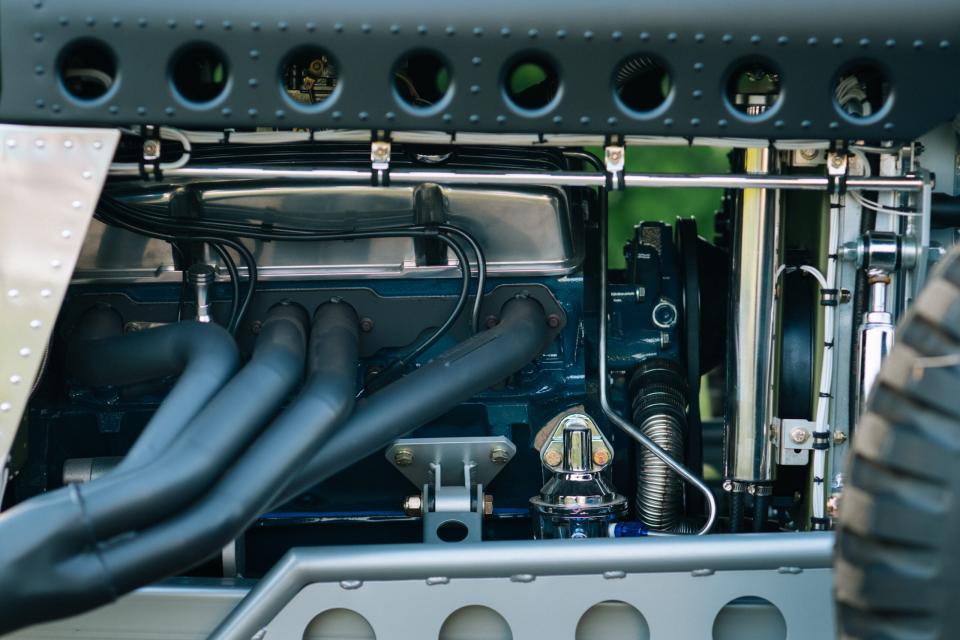

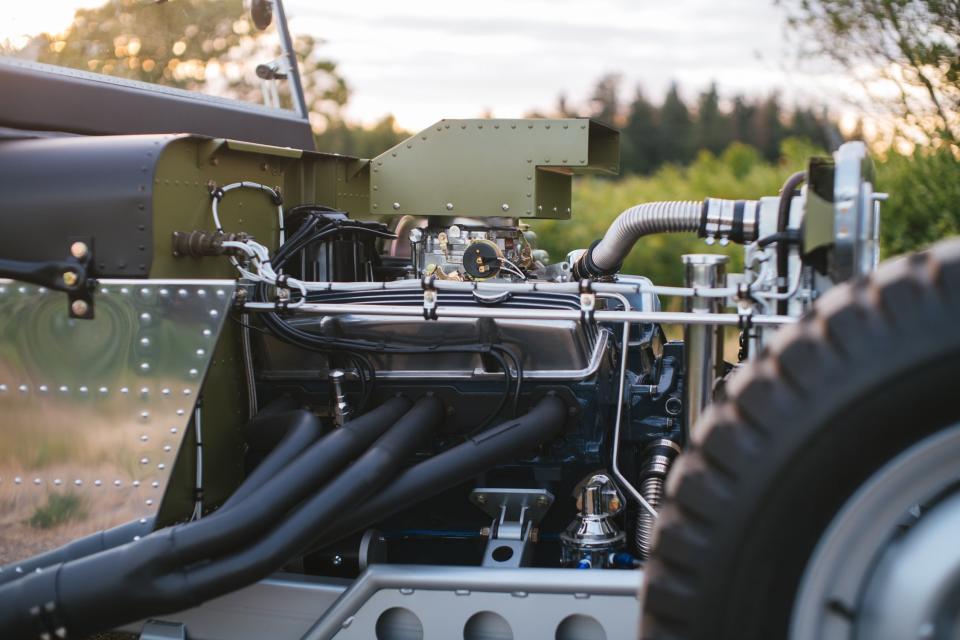
He tells me that incorporating the engine and driveline was actually less labor-intensive than building the body of the Warbird Jeep, which Cameron decided had to be made just like the body of an airplane. Rather than weld everything, Cameron used standard aviation AD rivets to piece together the entire hull of the Warbird utilizing stringers for structure. This was a painstaking process that required many attempts to get right and avoid visible imperfections. Any time he made a mistake, Cameron had to begin again so that whatever specific panel he was working on would be perfect.
It required more than 4,500 hand-shot rivets in the end. Cameron explained his commitment to the process saying, "I absolutely love the look of button head rivets, the amount of work that goes into shooting rivets is extremely difficult. Each rivet stands for something. When I look at warbirds, I see the amount of work and dedication it took to build them."
When I asked if there were any specific planes that influenced the exterior design of the Warbird, such as the P-51 Mustang or B-17 Flying Fortress, Cameron said, "I wasn’t really influenced by any one aircraft in particular. Being a tribute to WWII aviation, I tried to pull my influence from American warbirds as a whole. I enjoy it when everyone who looks at the Jeep sees a different aircraft. It allows everyone to feel a personal connection to their favorite warbird."
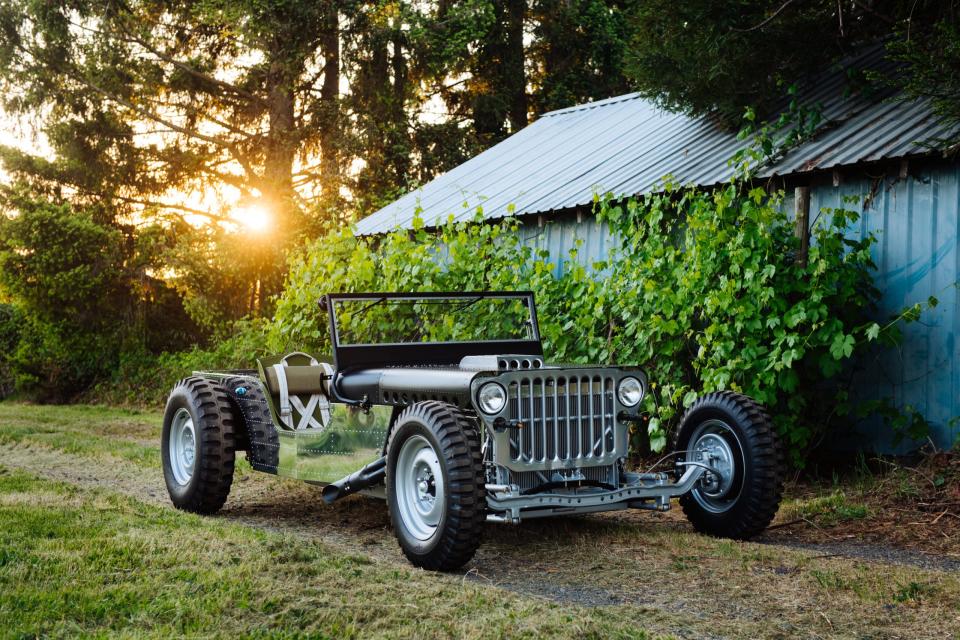
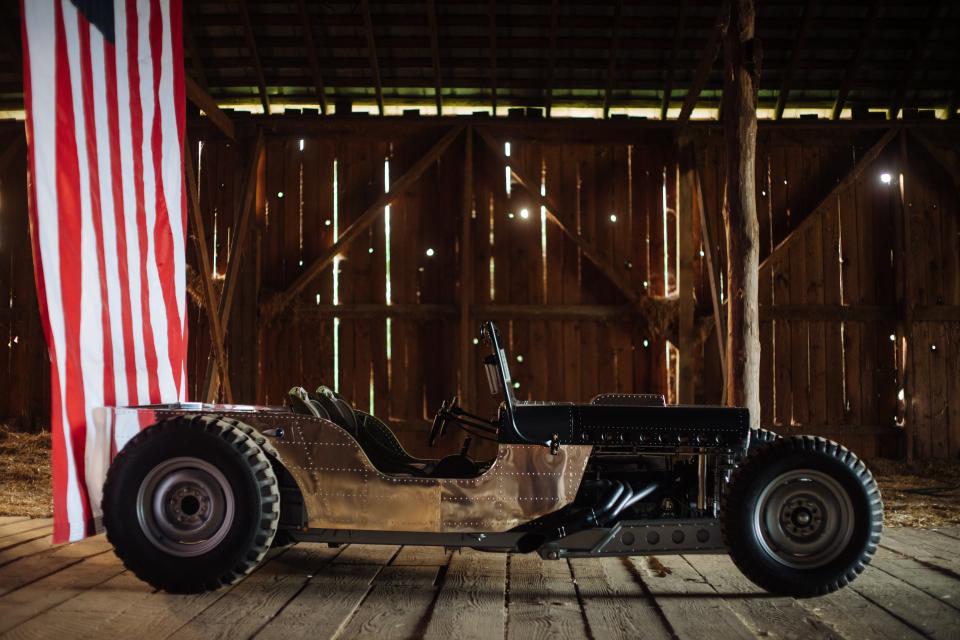
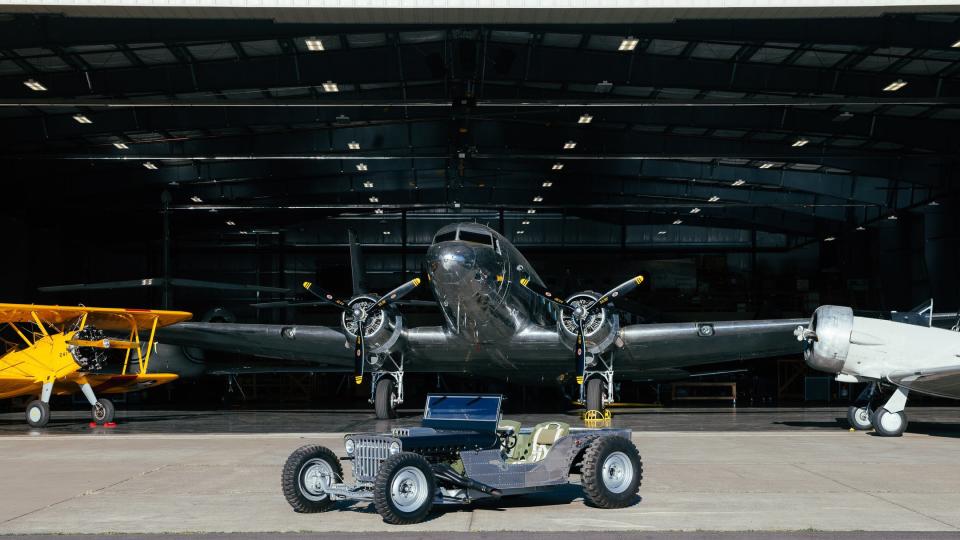
And that connection, of course, extends to the open-air cabin of the Jeep. Cameron wanted to evoke the feeling of climbing into the cockpit of a heavy bomber, which is his favorite kind of plane among vintage military aircraft. That explains the fully functional gauges and switches throughout the dashboard of the Jeep, which is made to look like the cockpit of a plane, complete with dual functional yokes (or steering wheels) as well as gauges that mirrored for driver and passenger. Pilot and copilot, that is. There's even a startup sequence required to get the V8 to rumble awake.
Cameron tells me the cockpit is his favorite thing about the Warbird, overall, and he's smitten with the Jeep's gear shifter in particular. He says, "What truly stands out to me as I look among the meticulous components is the shifter. It’s made to resemble a throttle quadrant. It took me a few attempts to come up with one I loved. My friends thought I was crazy when they saw me building another throttle quadrant shifter, but I refused to settle for something I didn’t love."
https://www.youtube.com/watch?v=8-ZRVlQKxq8
The Warbird truly is a labor of love. That much is clear when looking at all the details Cameron put into the build. In fact, he says that there are too many hidden details to list, but some of the standouts include green and red navigation lights on the body of the Jeep, as well as the .50 caliber gun barrels that function as turn signals. The fuel tanks, too, which are dressed up to look like bombs and are hidden beneath a lightening-holed panel in the Warbird's rear.
Cameron says the Jeep took a lot of patience and dedication to make. It only took him three and half years and over 3,500 hours of painstaking labor to build, none of which would have been possible without the help of his family and friends. He credits his wife for enabling him to spend that much time building as she looked after the kids back at battalion HQ. And his friends helped with all the paint, polish, wiring, and sewing needed to finish the build. When accounting for the work of his friends and family, Cameron estimates that it took around 4,000 labor hours for the Warbird to fly.

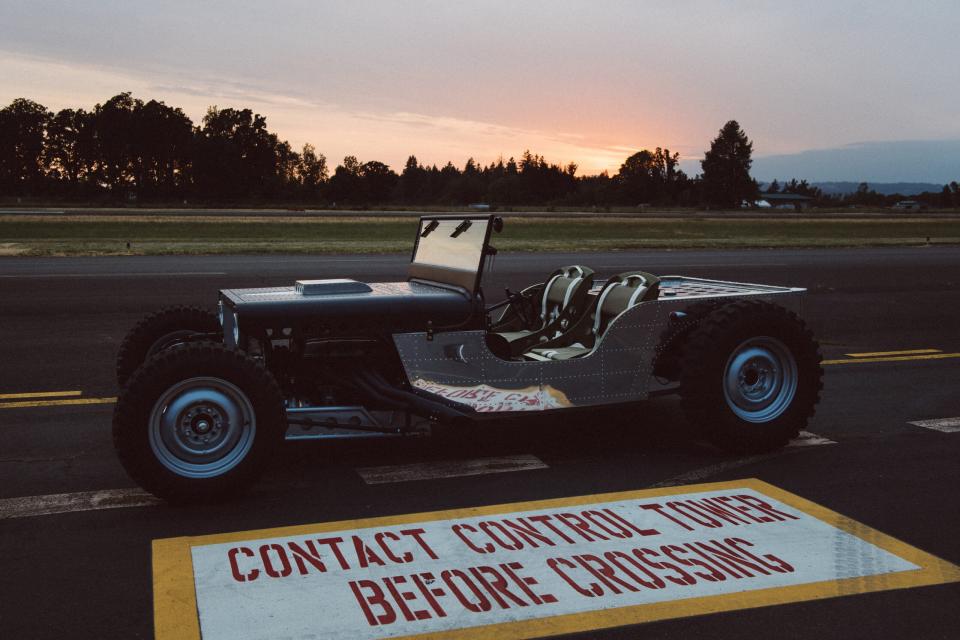
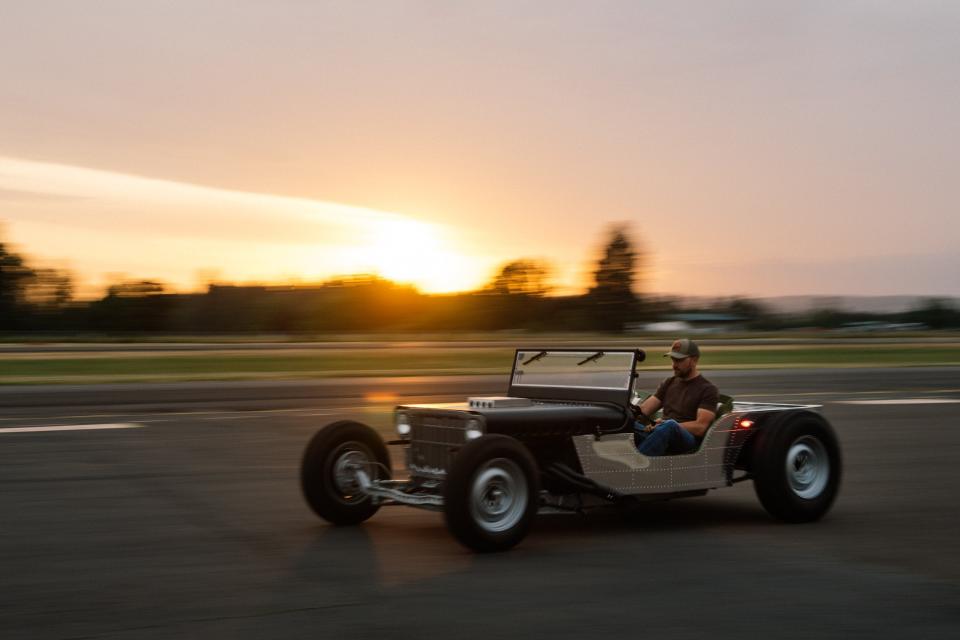

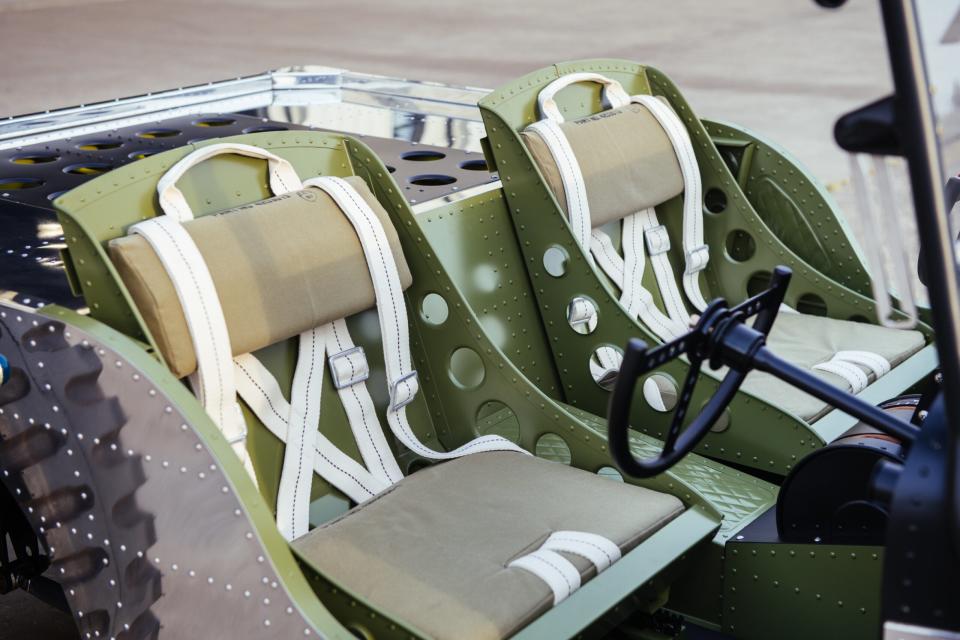
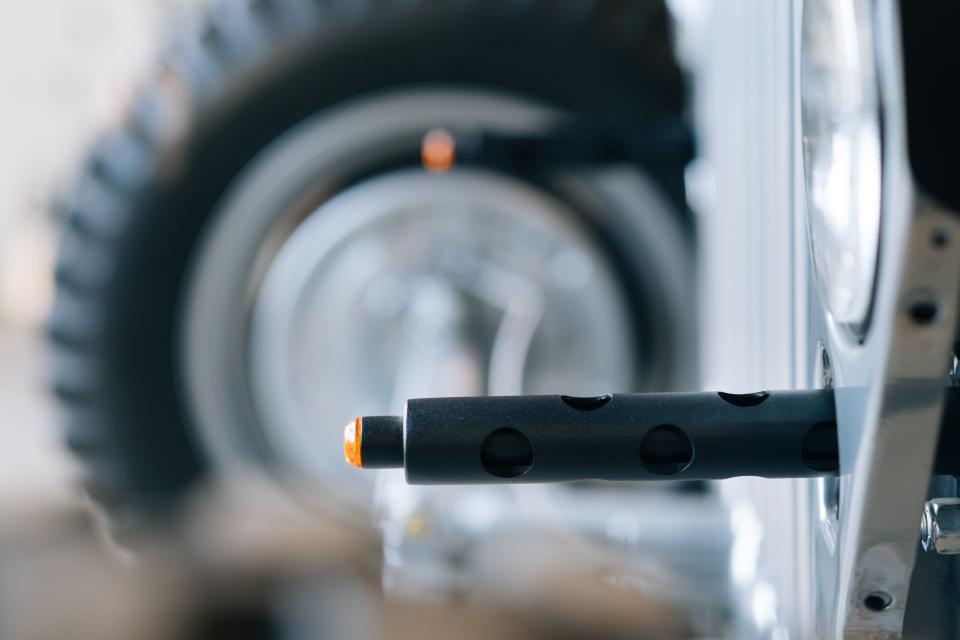


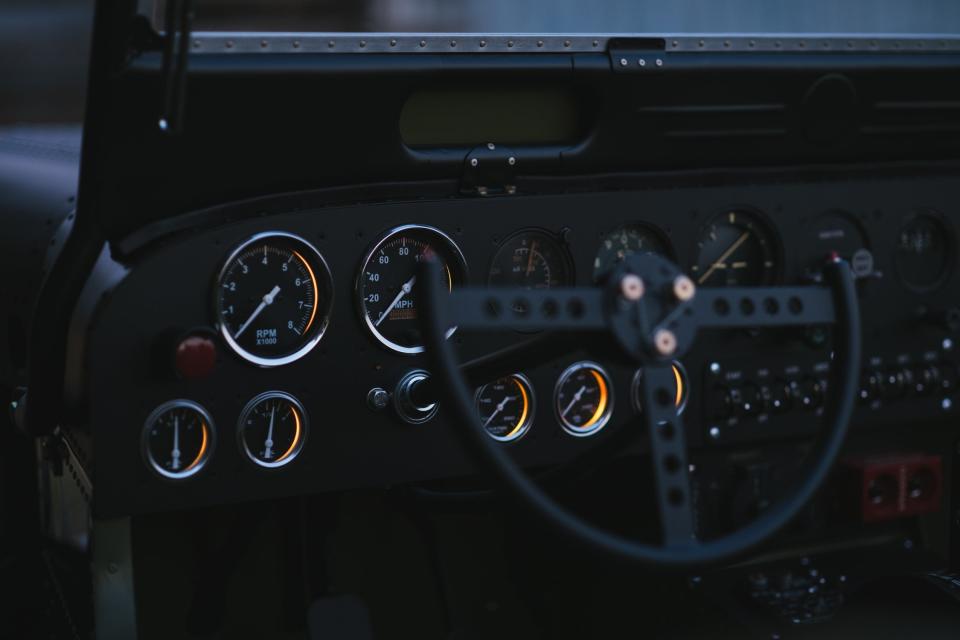
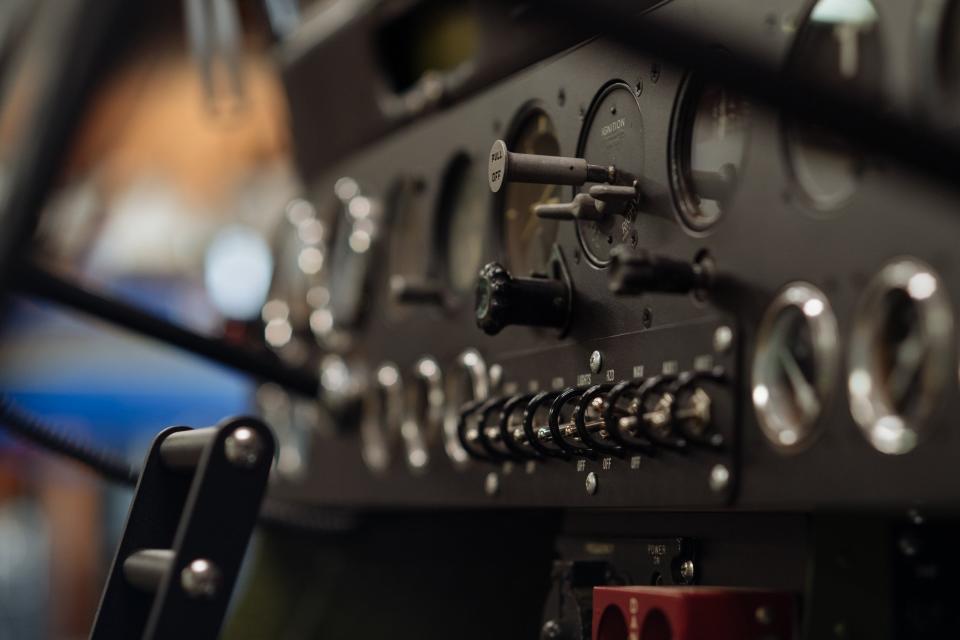
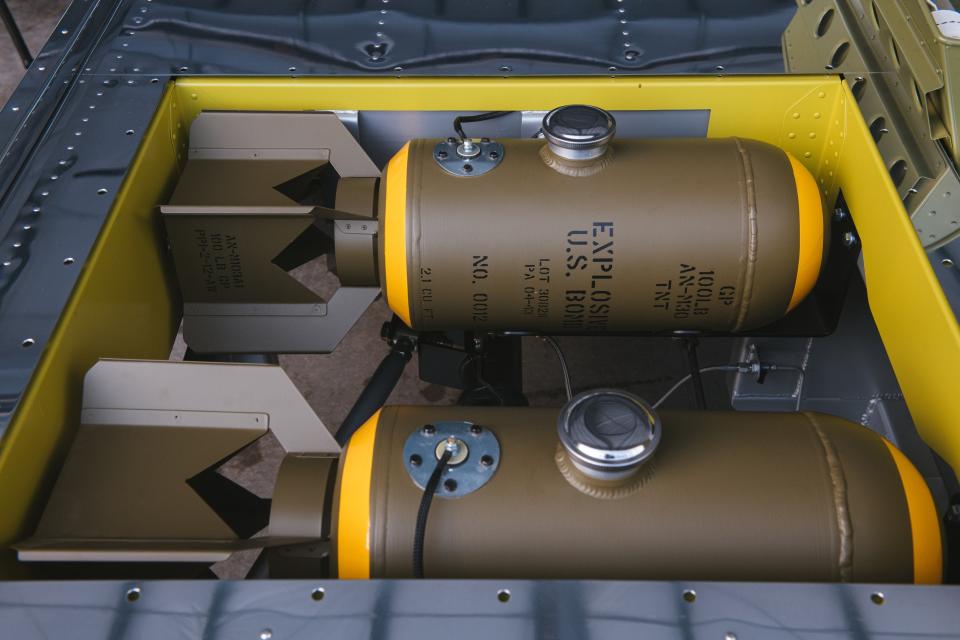
Got tips? Send 'em to tips@thedrive.com

 Yahoo Autos
Yahoo Autos 